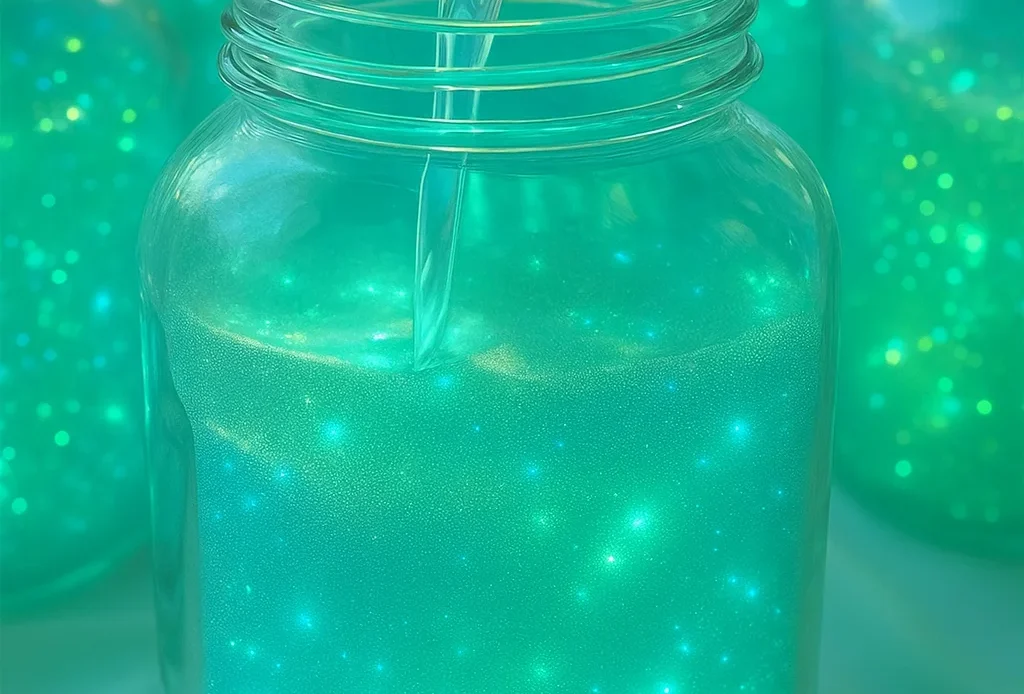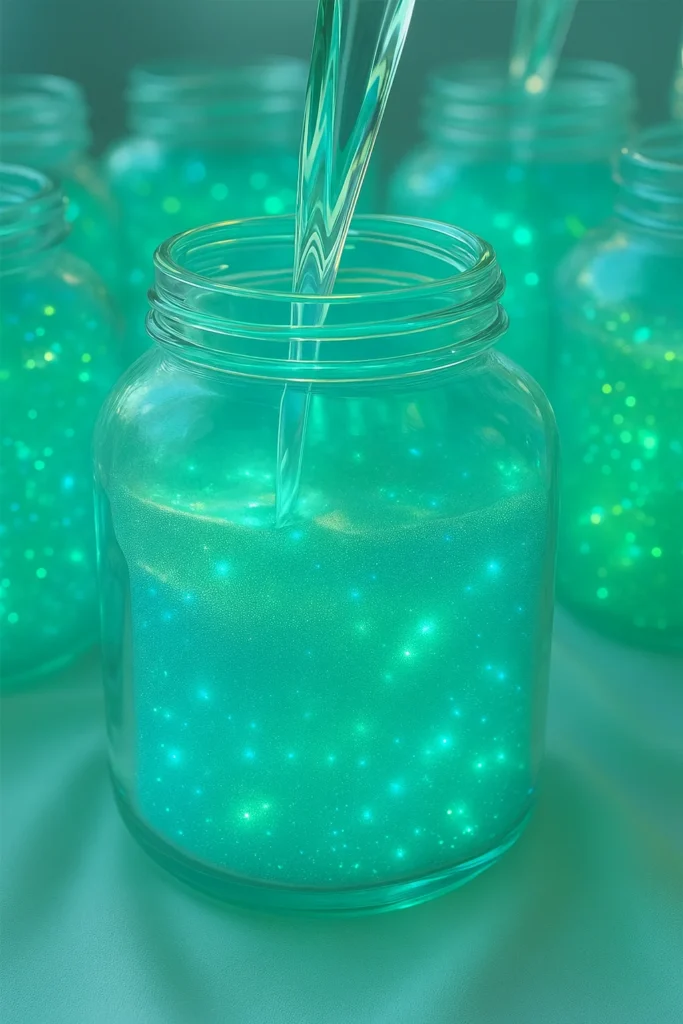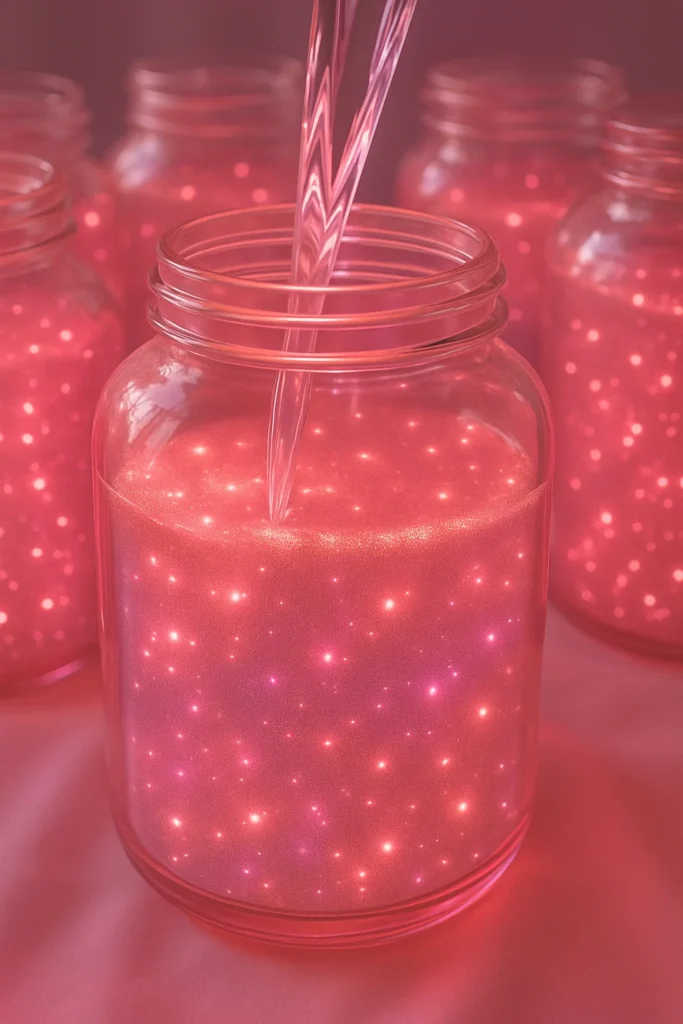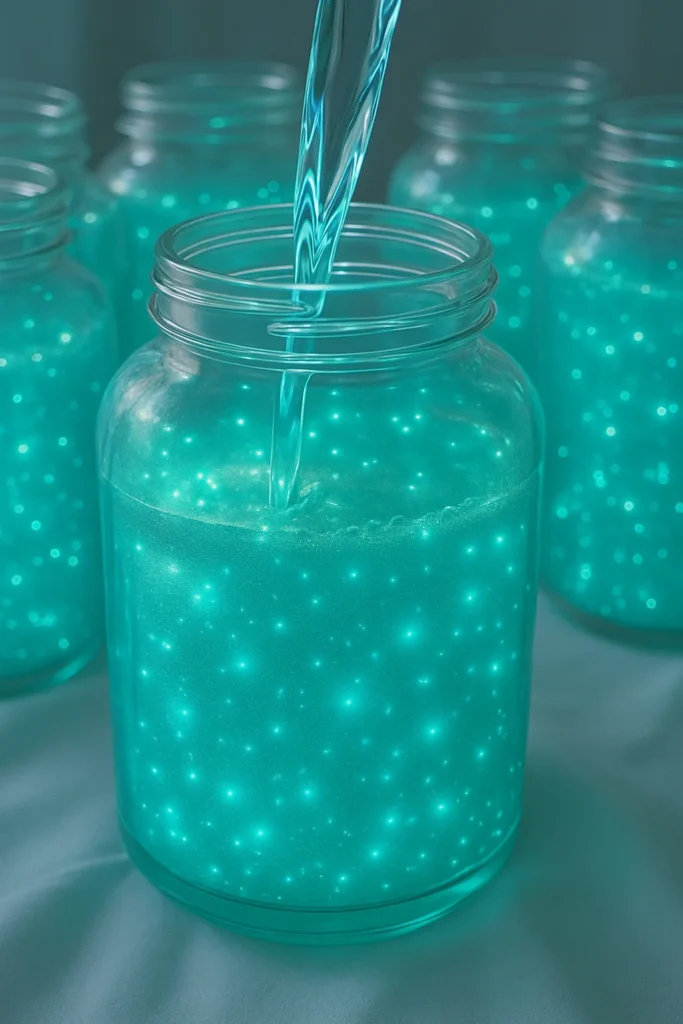
Ever wish you could bring fireworks indoors—minus the noise and danger? Well, with these glitter fireworks jars, you totally can! This fizzy science activity combines baking soda, vinegar, glitter, and a dash of fun for an eye-popping reaction your kids (and let’s be honest, you too) will love. Inspired by simple chemistry and fueled by creativity, these jars swirl with sparkle and science. Whether it’s a rainy day project or part of a homeschool lesson, this hands-on experiment is the perfect mix of fun and learning!

What Are Glitter Fireworks Jars?
Okay, picture this: it’s raining outside, your kids are bouncing off the walls, and the tablet’s already been in use for hours. You need a win—and fast. That’s when I discovered glitter fireworks jars. These things are pure gold when it comes to indoor activities for kids.
They’re like DIY magic—take a jar, toss in some baking soda and glitter, add a splash of vinegar, and boom! You’ve got yourself a miniature fireworks show that’s safe, sparkly, and sneaky educational. We’re talking full-blown preschool science experiments disguised as fun.
The First Time We Tried It
The first time I made one with my daughter, she yelled “IT’S ALIVE!” when the fizz started rising. Honestly, it looked like the jar was bubbling with fairy glitter. The vinegar hits the baking soda and creates carbon dioxide gas, which sends the glitter dancing up and down. It’s such a visual, tangible way to show how a chemical reaction works, especially if your kid’s a little STEM-inclined like mine.
More Than Just Pretty Bubbles
Beyond the sparkle, this is one of those rare STEM activities for kids that doesn’t require a ton of setup or spending. No fancy kits. No plastic packaging promising “magic” for $39.99. Just stuff you already have in the pantry—and maybe a trip to the dollar store for glitter (if you’re feeling brave).
This experiment helps teach:
- How reactions between acids and bases work (hello, early chemistry!)
- Cause and effect
- Sensory play (sight, sound, touch—all lit up)
Real Talk: Is It Messy?
Yep. A little. Especially if you let your kids go heavy on the vinegar (like I did). But it’s totally worth it for the engagement. Plus, it’s a great excuse to break out the washable tray you’ve been hoarding for years.
I’ll be honest—I’ve made these even when my daughter wasn’t around. There’s something weirdly relaxing about watching glitter swirl through colored foam. It’s like DIY lava lamp vibes, but you made it yourself.
So if you’re on the hunt for educational toys that don’t feel like school, or want to sprinkle some science into your daily routine, glitter fireworks jars might just become your new go-to.
Ingredients You’ll Need
Let me tell you, one of the best parts about these DIY science experiments is that you don’t have to buy some overpriced kit with fifty tiny plastic parts and zero instructions. Nope. These glitter fireworks jars are made with stuff you probably already have stashed in your kitchen or craft drawer.
Here’s what we used (plus a few optional goodies that level it up):
Your Basic Fireworks Starter Pack:
- Baking soda – You’ll need about 2 tablespoons per jar. This is your fizz fuel.
- White vinegar – The real MVP that kicks off the bubbly show.
- Clear jars – Glass or plastic, doesn’t matter. I used old jam jars. They work like a charm.
- Glitter – Fine glitter works best for movement, but chunky adds that extra sparkle. Go wild.
- Food coloring (optional) – Red and blue are fireworks classics, but honestly, rainbow jars look insane.
- Dish soap (optional) – A single drop makes the foam last longer and bubble more dramatically.
My Personal Pro Tips:
- If you’ve got little ones and you’re worried about glass, plastic containers work fine. I’ve even used clear party cups.
- Want this to double as sensory play? Let your kid pick the glitter colors and stir the mix. The tactile engagement is huge.
- I keep a tray underneath everything to catch spills because… vinegar and glitter on hardwood floors? Nah. Learned that the hard way.
This is honestly cheaper than those science kits for kids you see online that come with instructions in six languages and still make zero sense. And yet—it teaches more. You’re hands-on. You’re mixing. You’re predicting reactions. That’s real STEM learning tools in action.
You can even make this a full mini-lesson on what’s happening chemically. But if you just want 10–15 minutes of contained chaos that ends in sparkly smiles and minimal cleanup—this list will do just fine.
Next time you’re at the store, grab extra vinegar. Trust me. Once your kid sees it fizz once, they’ll want to do it 15 more times. (Ask me how I know.)
Step-by-Step Guide to Making Glitter Fireworks Jars
Alright, here’s where the real fun kicks in. If you’ve got your ingredients ready (and maybe a kid or two bouncing nearby yelling “Can we do it now?!”), let’s get into this super simple tutorial.
This is one of those educational activities for kids that looks way more impressive than it actually is. Bonus: It takes under five minutes to set up.
Step 1: Prep Your Work Zone
First thing I do? Toss a towel or tray down. Trust me on this. Glitter + vinegar = disaster if it hits the carpet. I use a big baking tray to contain the magic.
Step 2: Scoop in the Baking Soda
Add about 2 tablespoons of baking soda into each jar. It doesn’t have to be exact. Just enough to cover the bottom. This is your chemical base.
Step 3: Glitter Time!
Now’s the time for the sparkle. Let your kid pick their favorite colors. We’ve tried gold, teal, even glow-in-the-dark glitter (that was wild under a flashlight). This part is super fun for sensory play lovers.
Step 4: Add a Drop of Dish Soap (Optional But Awesome)
I didn’t do this the first time, and the fizz was over in like 10 seconds. Then I read that a drop of dish soap makes the foam thicker and longer-lasting, so now it’s a must.
Step 5: Add Food Coloring
Just a few drops go a long way. If you layer the colors or drop in different ones around the edge, it swirls like a lava lamp once the fizz hits.
Step 6: Time to Pour the Vinegar
This is the big moment. Slowly pour white vinegar into the jar—enough to cover the baking soda and glitter. And then… KA-BOOM! Fizzy, foamy, glittery madness. Seriously, it’s a light show in a jar.
Step 7: Repeat (Because They’ll Want To)
Here’s where home science projects become a never-ending cycle. My kid did this five times in a row. Just scoop out some of the old mix, toss in more baking soda and glitter, and go again. Honestly, I think she liked setting it up more than the fizz.
If you’re looking for STEM for preschoolers that actually holds their attention (and doesn’t require you to do 90% of the work), this right here is it. It’s hands-on, sparkly, and somehow always gets a “WHOA!” out of them—even the third or fourth time.

The Science Behind the Sparkle
Alright, now let’s talk about the real magic happening inside those glitter jars—because yes, they look cool, but they’re also a mini science lesson in a bottle.
What’s going on here is a classic example of a simple chemistry experiment that even preschoolers can wrap their heads around. When you pour vinegar (an acid) onto baking soda (a base), they react and produce carbon dioxide gas. That gas forms bubbles, and those bubbles rise, pushing the glitter up with them like a sparkly geyser.
Turning Playtime Into a Science Lab
I didn’t plan on getting all science-y at first. I just thought it was fun and sparkly. But my daughter asked, “Why does it fizz like that?” And boom—we turned our kitchen counter into a full-on lesson in STEM education for kids.
I explained it like this:
- Vinegar and baking soda mix and make gas.
- The gas makes bubbles.
- The bubbles lift up the glitter.
- Then the bubbles pop—and the glitter falls.
It was like a lightbulb moment for her. And honestly? I felt like a rockstar teacher. You don’t need a chalkboard or a lab coat for science learning at home—just some baking soda and a curious kid.
A Few Cool Add-Ons
Want to go deeper into the science side?
- Try using different vinegars (like apple cider or balsamic) to see if the fizz changes.
- Add measuring cups and have them compare reaction times.
- Chart the reactions and call it “data collection.” Boom. You’re doing interactive learning without even trying.
We’ve even talked about solids, liquids, and gases using this setup. It’s just one of those interactive learning tools that doesn’t feel like a “lesson”—but it totally is.
So yeah, while your kid thinks they’re just making sparkly chaos in a jar, they’re actually learning some serious science fundamentals. Who knew vinegar could be so educational?
Creative Variations to Try
So once you’ve done the standard glitter jar once—or let’s be real, ten times—it’s natural to want to spice things up. The good news? There are endless ways to remix this activity into even cooler versions. This is where your basic fizz turns into creative STEM activities that actually keep kids coming back for more.
Here’s some of my favorite spins on the original glitter fireworks jar:
Glow-in-the-Dark Glitter
Yup, it exists. We found a little tube of glow-in-the-dark glitter at the craft store, and my daughter lost her mind. We did the whole thing in a dim room with a flashlight pointed at the jar, and the sparkle show was next-level. This one’s awesome for sensory bottle ideas with a nighttime twist.
Layered Food Coloring
Instead of just dropping in color randomly, try layering. Add a drop of blue on one side, red on another, and maybe yellow in the center. When the vinegar hits it, the colors start to swirl and mix. Total tie-dye vibes. And yes—it looks even better when you record it in slow-mo. (Ask me how I found that out…)
Different Jar Shapes
We got creative and tried old spice jars, wide mason jars, even a clear plastic ornament we cut open and taped back together. Each one makes the fizz swirl in different patterns. It’s a super easy way to turn your DIY crafts for kids into an experiment with shapes and volume.
Holiday-Themed Glitter
For the 4th of July, we used red, white, and blue glitter. Around Christmas, we used green and gold. And for Halloween? Black glitter and orange food coloring with a few plastic spiders tossed in. Seriously spooky fizz.
Add Tiny Waterproof Toys
My daughter once dropped in a tiny mermaid toy, and suddenly the jar was an “underwater volcano.” We’ve also used mini dinosaurs, sequins, and even alphabet beads. It turns this into an awesome educational playtime moment—perfect for practicing letters, colors, or storytelling.
Honestly, the variations are half the fun. You’ll start with one jar, and next thing you know, your counter looks like a glittery science lab explosion—and I mean that in the best way. If your kids love hands-on STEM projects, these little tweaks will keep things fresh without having to buy anything new.

And there you have it—your full guide to creating magical, sparkly, science-filled glitter fireworks jars. From learning basic chemistry to unleashing your kid’s creative side, this is one of those fun activities for kids that checks every box. It’s messy (in a good way), it’s hands-on, and best of all—it secretly teaches science while your little one thinks they’re just making art that fizzes.
What I love most is that these jars grow with your child. One day it’s just a shiny explosion. Next, it’s a discussion about gas expansion, color theory, or even volume. It’s STEM learning at home that’s low-cost, no-pressure, and ridiculously engaging.
Whether you’re a homeschooling parent looking for educational crafts for children, or just want something new for weekend playtime, this little experiment brings the wow-factor every single time.
💥 So try it out, mix it up, and don’t forget—share your glittery creations on Pinterest! I’d love to see how your jars turned out. Tag it, pin it, and let the sparkle spread!


